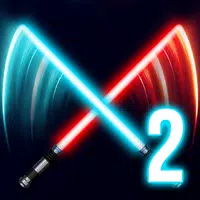Microsoft has implemented price increases across its Xbox consoles, accessories, and upcoming game releases, with titles set to reach $80 USD later this year. This decision sends shockwaves through the gaming industry, potentially influencing third-party pricing and even PlayStation's strategies.
Gaming costs haven't been this high since the 1990s. The entry-level Xbox Series S, with its modest 512GB storage, now retails at $380—barely $20 cheaper than PlayStation's discounted PS5 Slim Digital bundle. Meanwhile, the 2TB Xbox Series X climbs to $729, surpassing the PS5 Pro's price tag.
Xbox's pricing shift follows Nintendo's Switch 2 reveal, which broke conventions with a $450 console and $80 first-party games like Mario Kart World—skipping the $70 standard Sony and Microsoft established earlier this generation. With Xbox adopting Nintendo's premium pricing this holiday season, this upward trend shows no signs of slowing.
Will PlayStation Games Follow the $80 Trend?
Industry attention now turns to Sony. While market-leading PlayStation hardware enjoys stronger sales, economic pressures—from manufacturing costs to US tariffs—make price hikes inevitable. Even with potential tariff advantages, Sony won't ignore this revenue opportunity.
The better question isn't whether Sony will raise prices, but when. PlayStation's acclaimed first-party titles consistently deliver premium experiences, making them natural candidates for increased pricing. Remember Sony's $70 launch price for Returnal? That decision foreshadowed today's landscape.
Considering production budgets for PlayStation exclusives, $80 pricing appears unavoidable. Sony views its marquee franchises as industry benchmarks—commercially successful and critically acclaimed properties that justify premium pricing, especially when competitors set precedent.
The Decline of Physical Media
Beyond surface-level price adjustments, corporations see opportunity in accelerating digital adoption. Subscription services like Xbox Game Pass and PlayStation Plus generate superior margins compared to physical sales—explaining their aggressive promotion.
While Game Pass hasn't announced new price increases (after mid-2024 adjustments), its value proposition strengthens as individual game prices climb. Even purchasing one $80 title nearly covers months of subscription access.
Physical media enthusiasts face sobering realities: these price hikes may expedite the industry's transition to digital distribution beyond previous projections.
GTA 6's Looming Price Benchmark
The gaming industry confronts post-pandemic economic realities: ballooning development costs meet tightening profit margins. Answers manifested in premium console pricing (PS5 Pro, Switch 2) and now, increased software costs.
All eyes turn to Rockstar's GTA 6—expected in 2026—to confirm whether $80 becomes standard or merely transitional. Early speculation about $100 pricing gained surprising traction considering GTA 6's unprecedented development scale and anticipation.
Take-Two's leadership previously criticized gaming's "undervalued" pricing relative to entertainment hours provided. When GTA 6 launches, expect base pricing starting at $80 minimum—though savvy players may increasingly wait for sales rather than paying launch premiums.
When Rockstar announces GTA 6's pricing, prepare for record-breaking figures. While exceptions like Helldivers 2 prove successful at lower price points, the broader trend points unmistakably upward—forcing gamers to become more selective with their purchases.






